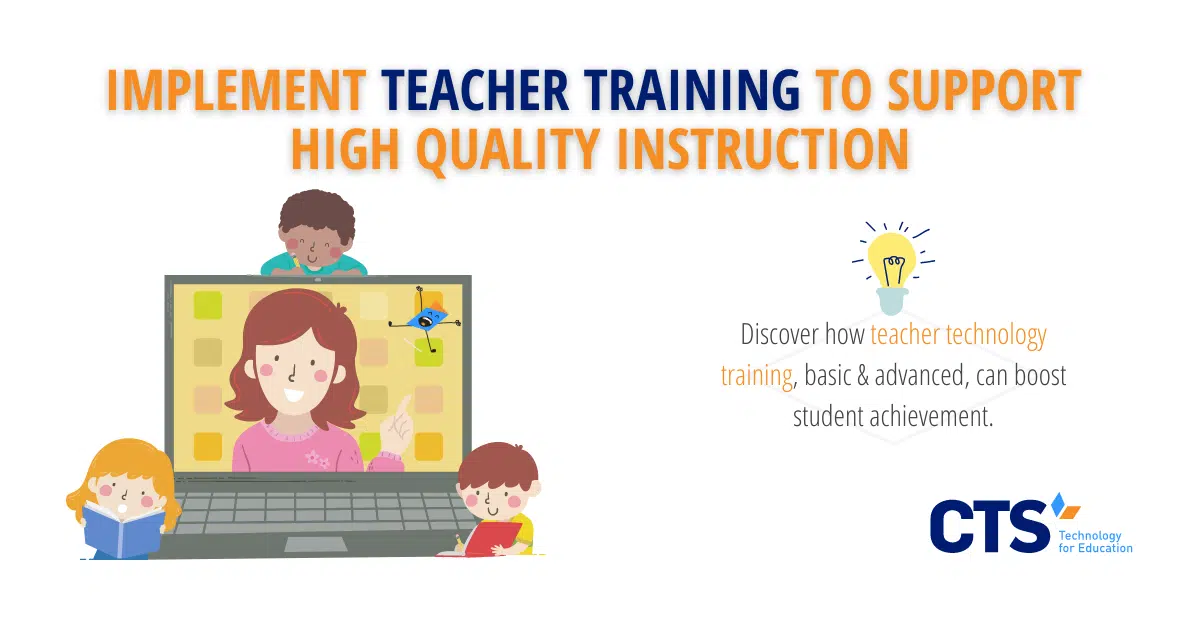Technology is more central to school programming and the classroom experience than ever before.
With the advent of widespread remote learning, schools have increasingly recognized the centrality of technology to instructional programming. From Zoom and other video conferencing tools to online platforms that differentiate instruction in real-time, many of the instructional practices central to distance learning are likely to carry over to in-person instruction.
Successful school technology usage depends, however, on effective training. Even as schools pour millions of dollars into staff and student technology each year, the yield on such investments can be minimal absent high-quality professional development efforts. Conducting in-depth school technology training for both teachers and administrators can make the most of a school’s investment, while also exposing school leaders to the myriad ways in which educational technology can reinforce and add value to their school’s unique mission.
At CTS, our teacher technology training programs help drive outcomes that support your school’s unique mission.
Our team has worked with more than 60 schools across the United States to deliver high-quality educational technology services that support our partners’ unique missions. Whether your school maintains a 1:1 student-to-Chromebook ratio, deploys dozens of online instructional platforms, or simply wants to learn more about the benefits of educational technology to daily instruction, CTS’s teacher technology training offerings promise to help your school drive the instructional outcomes central to your unique mission.
Training a school’s teachers on Google Suite can significantly benefit daily instructional practice.
Thousands of schools across the country make use of Google Suite to drive instructional outcomes, but many teachers lack basic training that could take their practice to the next level. School leaders rely on Google Drive to organize, share, and archive valuable instructional and non-instructional documents. Exposing teachers, particularly those without extensive Google Suite experience, to even the most elementary document sharing and creation functions can yield significant positive benefits for school programming.
For schools that use Gmail, trainings that emphasize the platform’s calendar integration, chat, and task features can help turn pen-and-paper to-do lists into synthesized organizational dashboards that help teachers quickly triage daily tasks and spend more time focused on student learning. Similarly, training teachers on Google Classroom can facilitate remote instruction, seamless homework assignment and collection, and parent communication. The platform can also help teachers bridge the gap between school and home, providing the basis for effective partnerships centered on student success and ongoing teacher-family communication.
Learning the ins-and-outs of a student information system can make the difference between merely collecting data and using data to drive instructional outcomes.
For many teachers, knowledge of their school’s student information system (SIS) begins and ends with attendance-taking and grade submission. Many of the most commonly used platforms, however, also provide powerful academic and social-emotional tracking tools that, when used effectively, can help drive instructional outcomes.
Many teachers, for example, may not realize that PowerSchool offers a suite of reports that slice-and-dice student absences depending on a range of criteria and provide an overview of student grades for a particular class period or subject. Even basic reporting tools can provide teachers with insights they may have otherwise spent hours generating in Excel or other platforms that lack a direct link with their school’s SIS.
Teacher training that addresses more advanced skills like custom reporting can yield still more powerful insights. For example, many student information systems allow teachers to merge otherwise disparate datasets—for example, student performance on an exam given in their fifth-grade year with performance on an exam during the current year—into a single report that directly compares outcomes across time. Side-by-side comparisons of student performance across grade levels and subject areas can allow teachers to identify trends for individual students and create intervention plans as necessary. Coupling students’ academic information with attendance and behavioral data can produce other useful reports, all of which begin with effective training efforts.
Training teachers on classroom hardware, like projectors, can help spur engagement from reluctant learners.
Although many teachers use their projectors, SMART Boards, and other classroom hardware on a regular basis, trainings that expose teachers to the full range of their devices’ capabilities can provide additional tools to boost student engagement.
While some learners excel with teachers who utilize traditional instructional methods, others require innovative approaches that can benefit from technology use. Building teacher capacity by demonstrating the ways they can use existing classroom technology to reach each student can improve student achievement, while simultaneously building classroom community by bringing each student into the learning process.
Teachers properly trained on their school’s educational software can make the most of each platform, boosting student achievement in the process.
Instructional platforms like SMART Notebook, GoGuardian, and DreamBox offer a host of tools teachers can use to engage their learners, regardless of grade level. Training teachers on the full range of services offered by each platform can make the most of a school’s investment in online instructional platforms and, like trainings that address classroom device usage, increase student engagement with course material.
Learners who balk at a lengthy, black-and-white worksheet, for example, may jump at the chance to engage in math exercises on BrainPop or DreamBox, while those who struggle with pleasure reading may gladly traverse online graphic novels. Effective use of these platforms can therefore add significant value to a teacher’s existing instructional practice and increase the engagement level of the class as a whole.
Teacher technology training can provide a gateway into special projects that inspire student-driven innovation.
Successful coding bootcamps, robotics workshops, and STEM and maker labs all begin with effective teacher technology training and ultimately broaden the number of students deeply engaged in a school’s instructional programming.
While the idea of introducing students to more advanced STEM fields is often attractive to schools, staff may lack the know-how to properly execute such efforts and be unsure of where and how to secure the requisite software or hardware. Bringing in a third-party consultant to advise school leadership or conduct a formal professional development session can solve this issue, providing the school with a level of experience or expertise it may lack in-house.
Non-instructional staff can similarly leverage school technology to achieve operational excellence.
The benefits of teacher technology trainings need not be confined to instructional staff alone. Rather, such trainings can easily be adapted for a school’s non-instructional staff, who can help drive the school’s instructional programming through operational excellence. Effective management of classroom devices, high-quality data analysis skills, and in-depth knowledge of a school’s technology infrastructure can provide tremendous benefits to students and teachers.
An administrator who knows how to quickly troubleshoot classroom hardware, pull a report from a school’s student information system, or pinpoint the last login time for a particular student device can help teachers quickly triage common technology issues and shift the focus back to student learning.




